Introduction
Embark on a journey through the ancient sites of the Rome Ruins, where the echoes of ancient times still resonate. Explore the labyrinthine underground tunnels beneath the Capitoline Hill, where small groups can uncover hidden treasures. Stand in awe before the imposing triumphal arches that adorned the city’s main roads, and marvel at the remnants of ancient structures that have stood since the 6th century. From the bustling Piazza Navona to the sacred Temple of Venus, each historical site tells a tale of Roman mythology and the rich history of Southern Italy.
The Roman Forum: The Heart of Ancient Rome
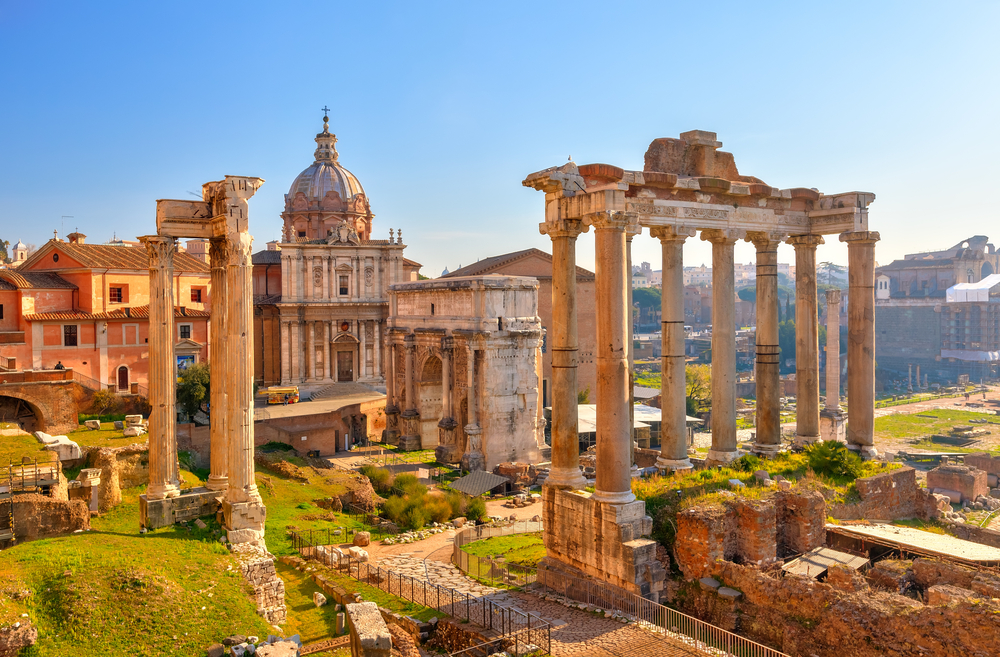
The Roman Forum, is a Rome ruin located in the heart of Rome, was the epicenter of political, religious, and social life in ancient Rome. This sprawling archaeological site is a testament to the grandeur and power of the Roman Empire. As you stroll through the ruins of the Roman Forum, you can almost hear the echoes of ancient voices and witness the bustling activity that once filled these historic grounds.
The Roman Forum was the center of Roman political life, where important decisions were made and public speeches were delivered. It was also home to numerous temples dedicated to Roman gods and goddesses, such as the Temple of Saturn and the Temple of Vesta. These temples served as places of worship and played a significant role in the religious practices of the ancient Romans.
One of the most iconic structures in the Roman Forum is the Arch of Septimius Severus, a triumphal arch built to commemorate the victories of the Roman Emperor Septimius Severus. This majestic arch stands as a symbol of Rome’s military might and serves as a reminder of the empire’s glorious past.
The Colosseum: A Monument to Spectacle and Entertainment
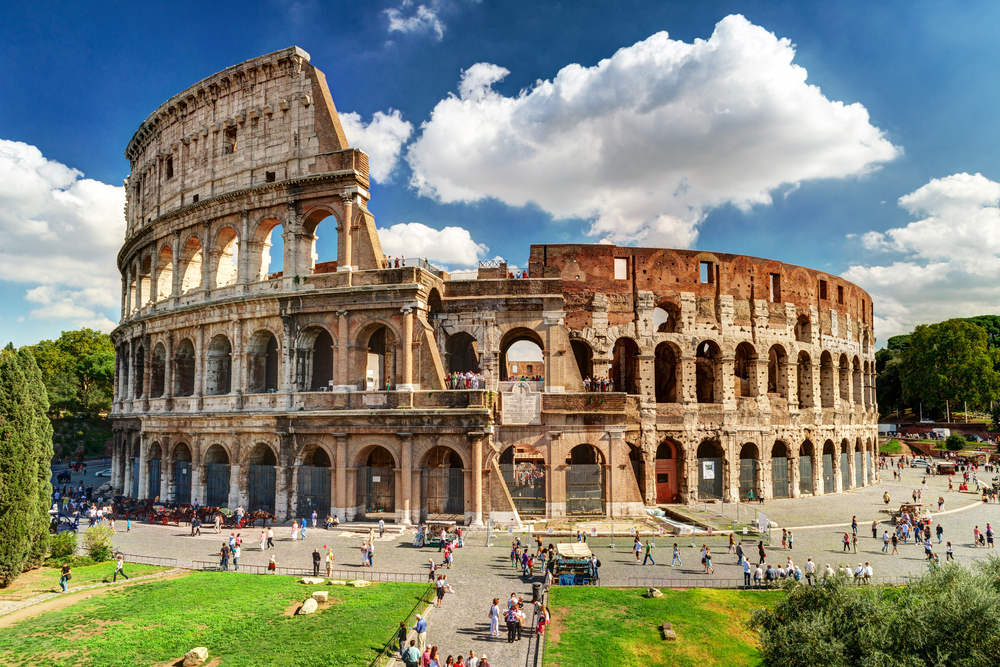
No visit to Rome would be complete without exploring the awe-inspiring Colosseum. This ancient amphitheater, also known as the Flavian Amphitheater, was the largest of its kind in the Roman Empire and could accommodate up to 50,000 spectators.
The Colosseum was the venue for spectacular gladiatorial contests, wild animal hunts, and even naval battles. The Roman emperors used these events to entertain the masses and showcase their power and wealth. As you stand in the midst of the Colosseum’s ruins, you can almost hear the roar of the crowds and feel the excitement that once filled this iconic structure.
Despite the passage of time and the damage inflicted by earthquakes and looting, the Colosseum continues to be a symbol of Rome’s rich history and architectural prowess. Its elliptical shape and intricate design are a testament to the engineering genius of the ancient Romans.
The Palatine Hill: The Birthplace of Rome
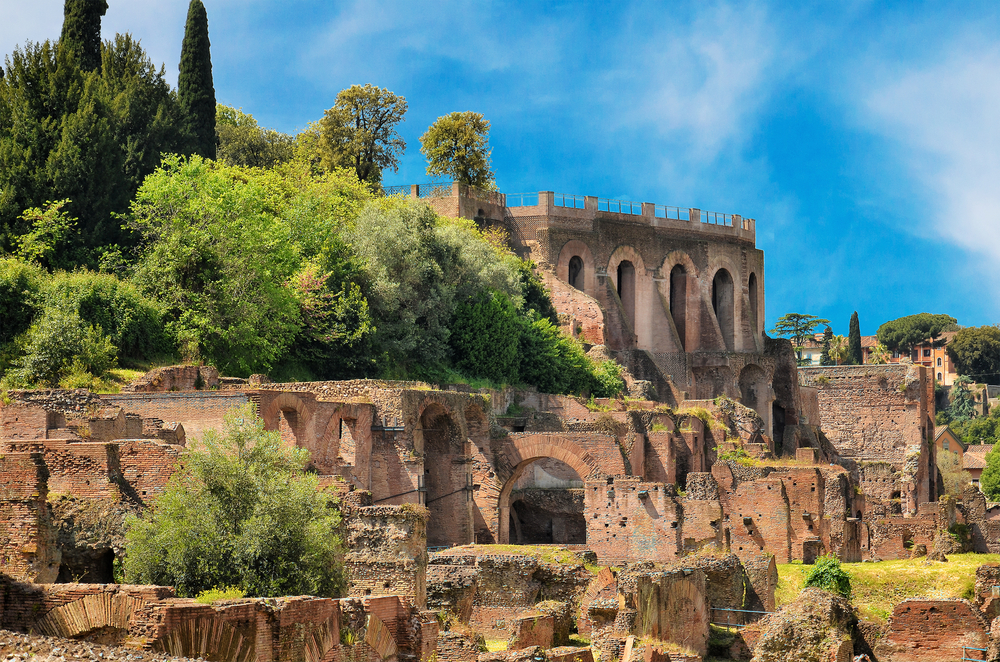
Perched above the Roman Forum, the Palatine Hill is one of the most ancient parts of Rome and is believed to be the birthplace of the city itself. According to legend, it was on this hill that Romulus founded the city of Rome in 753 BCE.
Today, the Palatine Hill is a captivating archaeological site that offers visitors a glimpse into the lives of Rome’s elite. As you wander through the ruins of magnificent palaces and luxurious villas, you can imagine the opulence and grandeur that once characterized this exclusive neighborhood.
One of the most notable structures on the Palatine Hill is the Domus Augustana, the private residence of the emperors during the Roman Empire. This sprawling complex featured lavish gardens, ornate frescoes, and breathtaking views of the city below. Exploring the ruins of the Domus Augustana allows you to step back in time and experience the extravagant lifestyle of ancient Rome’s ruling class.
Circus Maximus: The Ancient Roman Racetrack
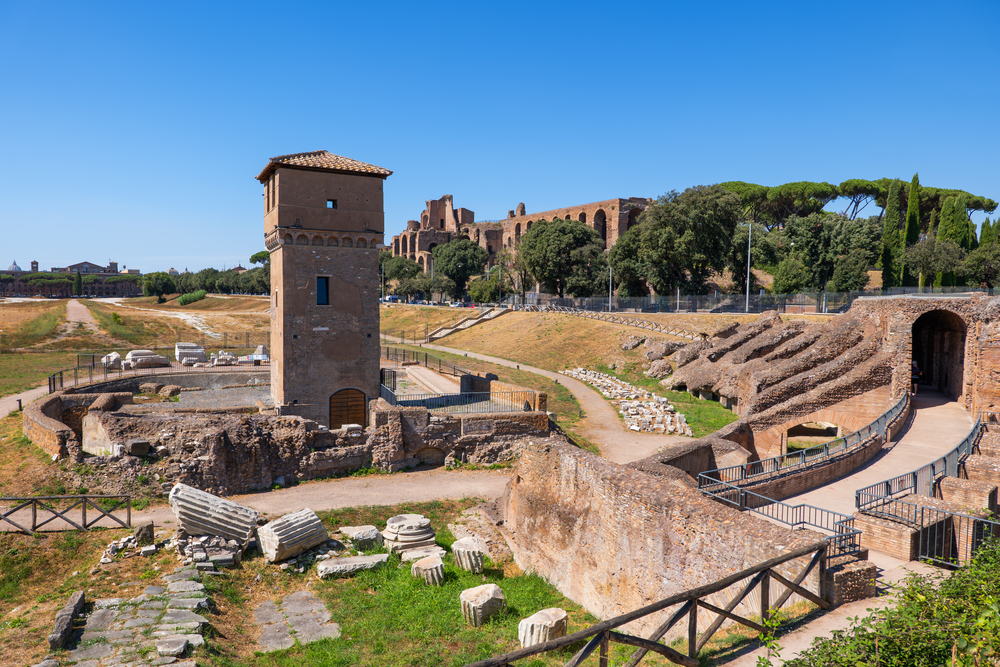
Located in the valley between the Palatine and Aventine Hills, the Circus Maximus was an ancient Roman chariot racing track and one of the largest entertainment venues in Rome. This sprawling complex could accommodate up to 250,000 spectators and was the site of thrilling chariot races and other spectacles.
Although little remains of the Circus Maximus today, its sheer scale and historical significance make it a must-visit site for history enthusiasts. As you walk along the ancient track, you can imagine the thunderous cheers of the crowds and the adrenaline-fueled excitement of the chariot races that once took place here.
The Baths of Caracalla: Ancient Rome’s Grand Bathing Complex
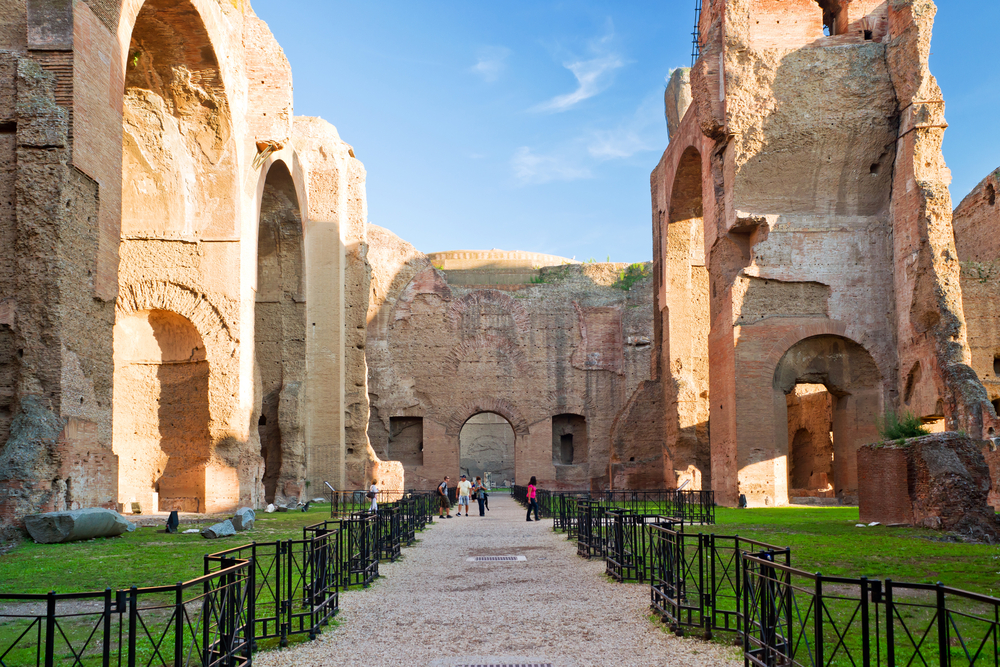
The Baths of Caracalla, also known as the Thermae Antoninianae, were among the largest and most luxurious public bathing complexes in ancient Rome. Built during the reign of the Emperor Caracalla in the 3rd century CE, these baths were a testament to the opulence and extravagance of the Roman Empire.
The Baths of Caracalla featured a vast complex of hot and cold baths, exercise halls, libraries, and even a stadium for athletic competitions. The grandeur of the architecture and the intricate mosaic floors showcased the wealth and artistic prowess of ancient Rome.
Today, the ruins of the Baths of Caracalla offer a glimpse into the daily life of ancient Romans. As you explore the vast complex, you can imagine the bustling activity and social gatherings that once took place within these walls.
Ostia Antica: Rome’s Ancient Harbor City
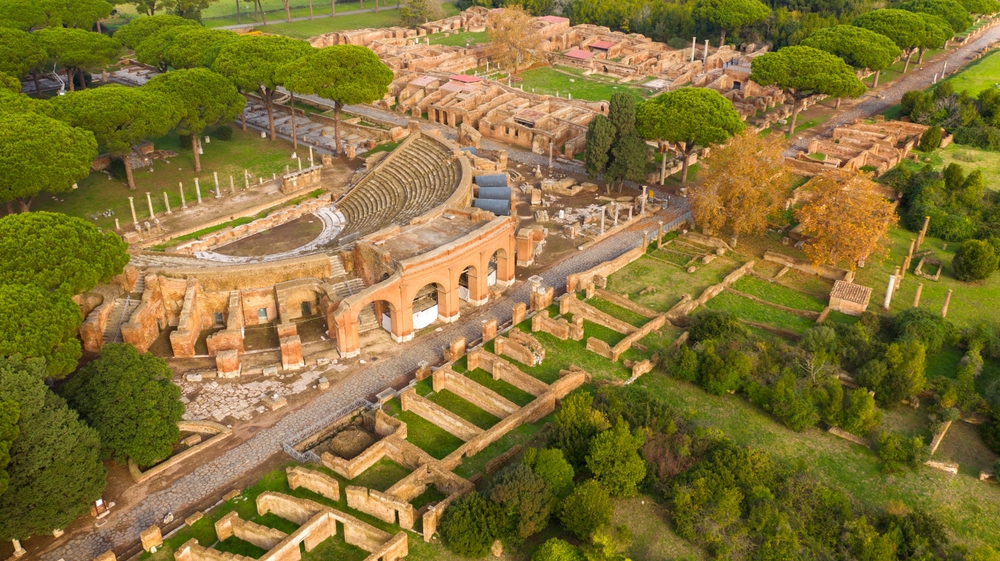
Located at the mouth of the Tiber River, Ostia Antica was the ancient harbor city of Rome. This thriving port played a crucial role in the economic and commercial activities of the Roman Empire.
The ruins of Ostia Antica offer a fascinating insight into daily life in ancient Rome. As you wander through the well-preserved streets, you can explore ancient shops, taverns, and even apartment buildings. The remains of the city’s amphitheater, forum, and temples provide a glimpse into the vibrant cultural and social life of this bustling Roman city.
Visiting Ostia Antica is like stepping back in time and experiencing the sights and sounds of a bustling ancient Roman city. It is a testament to the enduring legacy of Rome’s maritime heritage and the importance of trade and commerce in the ancient world.
Arch of Constantine: A Triumphal Arch of Roman Victory
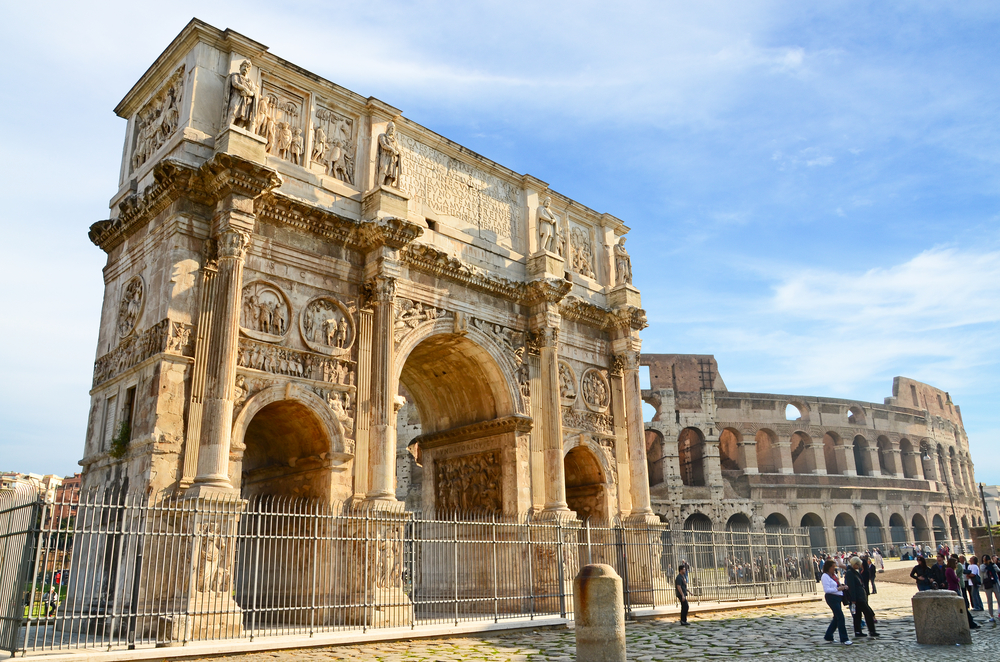
The Arch of Constantine is a triumphal arch located near the Colosseum in Rome. Built in 315 CE to commemorate the victory of Emperor Constantine over his rival Maxentius, this majestic arch is a symbol of Roman military might and imperial power.
The Arch of Constantine features intricate carvings and reliefs that depict scenes from Roman history and mythology. These decorative elements were taken from earlier monuments and repurposed for the construction of the arch, showcasing the Roman practice of spolia, the reuse of existing materials in new structures.
Standing beneath the Arch of Constantine, you can’t help but feel the weight of history and the grandeur of the Roman Empire. It serves as a reminder of the empire’s triumphs and achievements, as well as its enduring legacy in the modern world.
Conclusion
As you bid farewell to the best ruins of Rome, from the majestic Capitoline Hill to the serene Villa Ada Park, you carry with you the stories of ancient times and the legacy of the Roman Empire. From the burial chambers of emperors to the bustling streets of the 7th century, every corner of this open-air museum holds a piece of history waiting to be discovered. So, whether you’re gazing upon the Temple of Antoninus or wandering along the ancient Appian Way, remember that you’re walking in the footsteps of emperors and legends, where every moment is a testament to the enduring allure of Rome’s rich past. From the ground floor of the Aventine Hill to the upper levels of the Senate House, the best way to experience Rome’s ancient structures is to immerse yourself in its history. Stand in awe at the ancient building remnants, envisioning the gladiator fights that once took place along the Appian Way, Rome’s main road. From the iconic Largo Argentina to the grandeur of Piazza Venezia, each site offers a glimpse into the glory of Roman times, preserving the legacy of North Africa to the splendor of the 16th century.
Dive Deeper into similar topics By reading these articles: Hidden Gems of Europe: 10 Must-See Places To Visit This Summer and Travel Safely: 5 Ways to Stay Safe on Your European Vacation